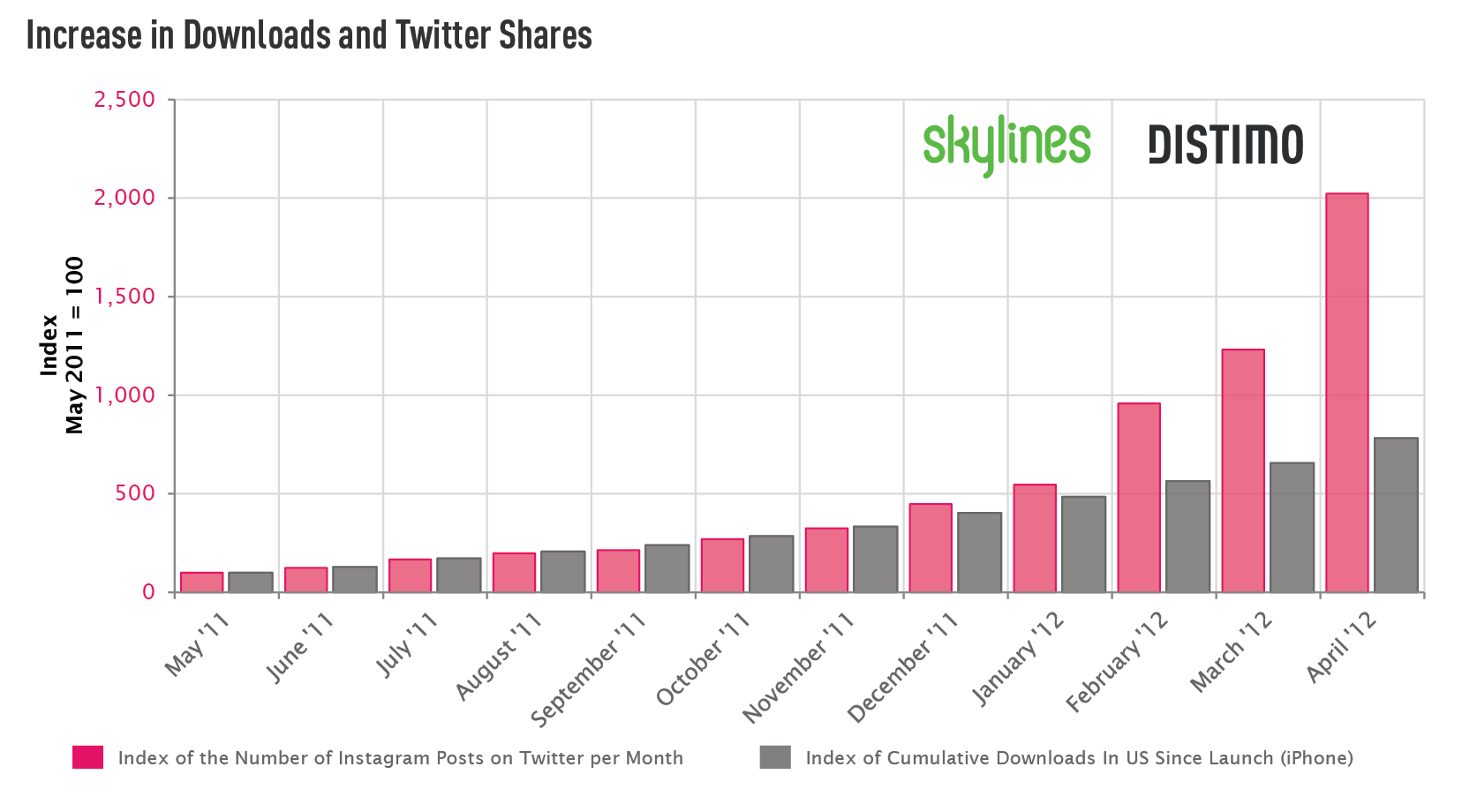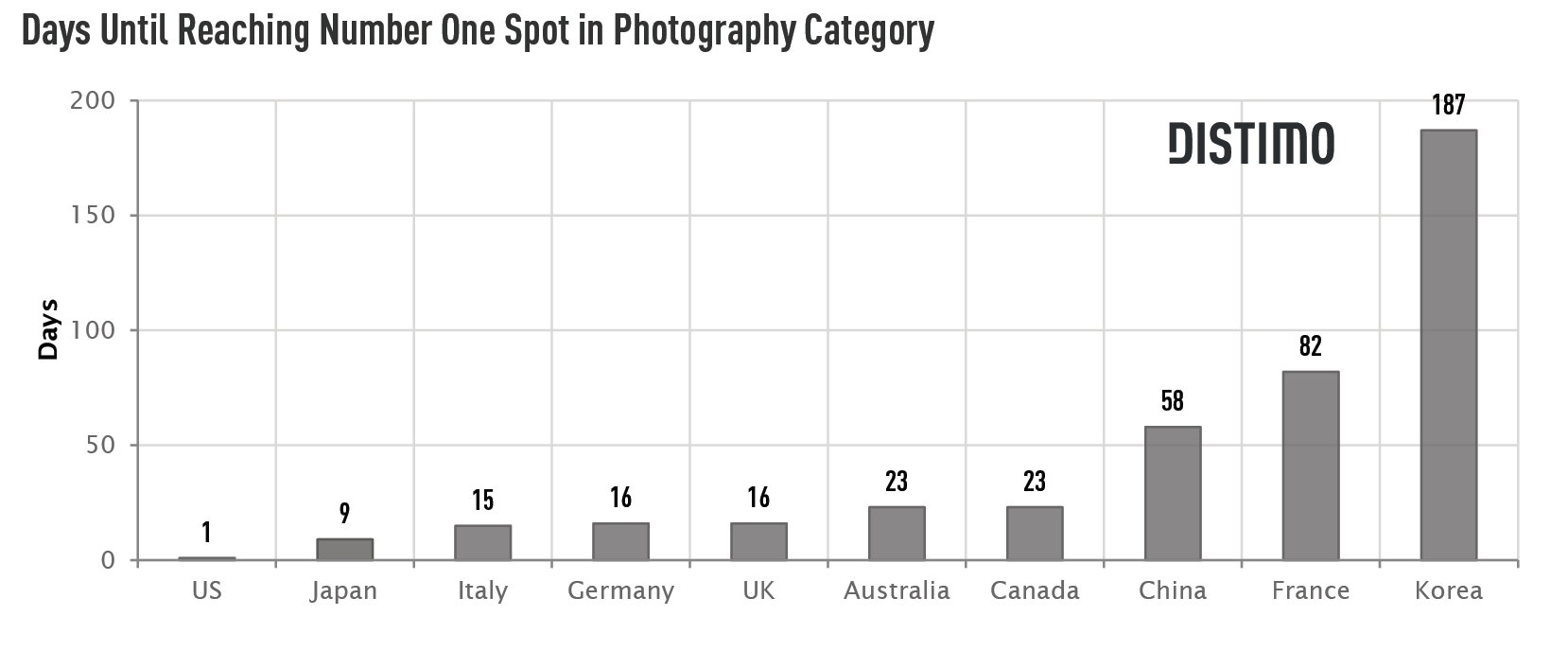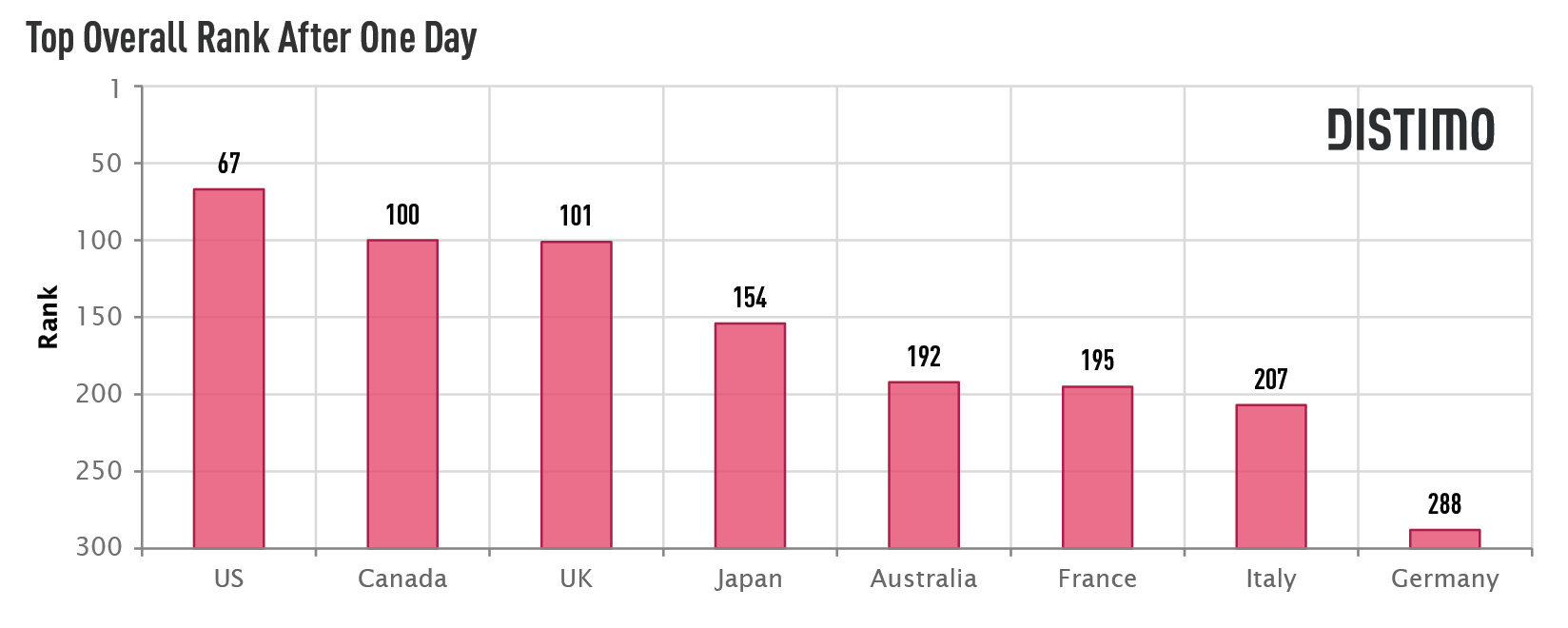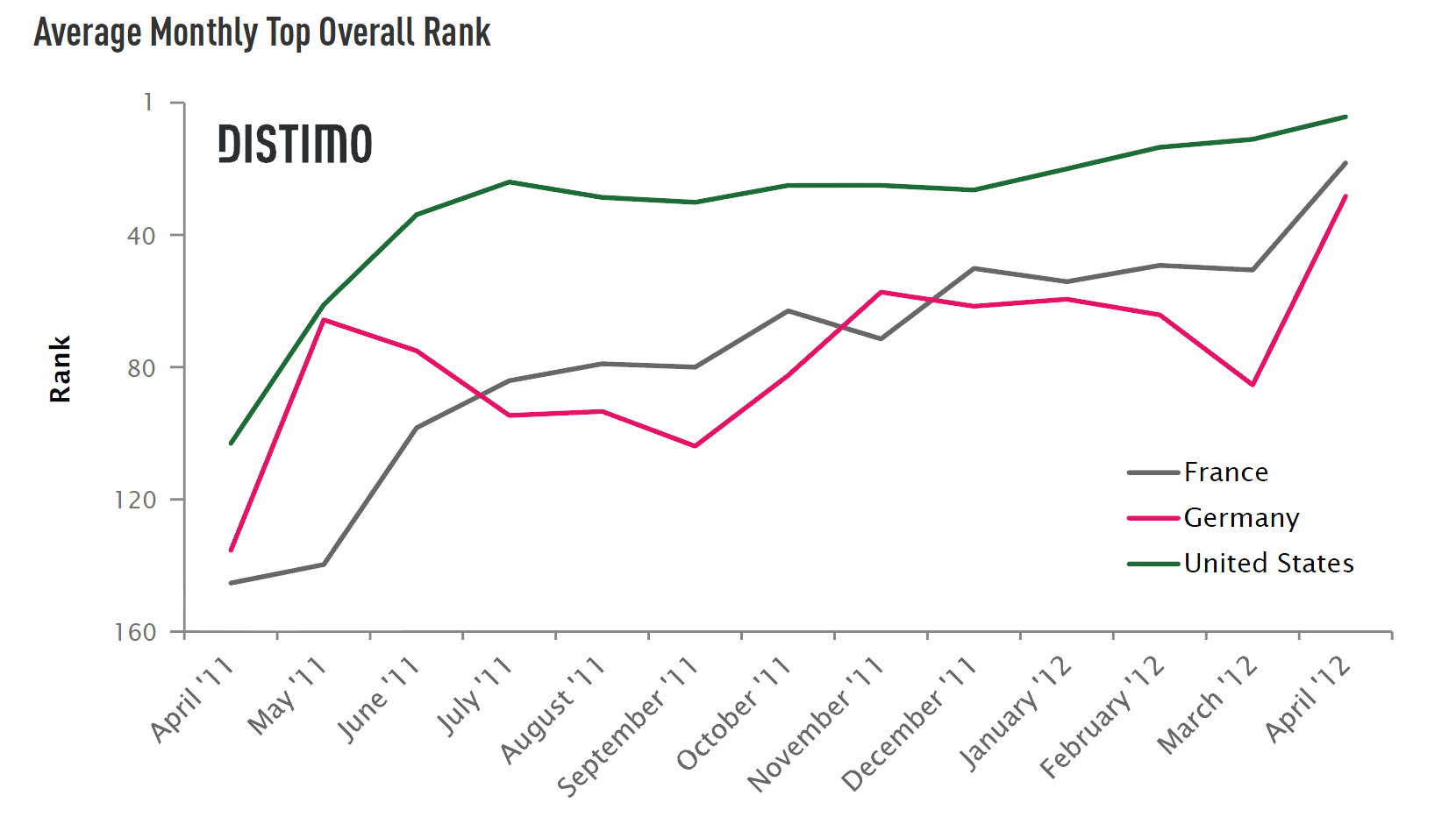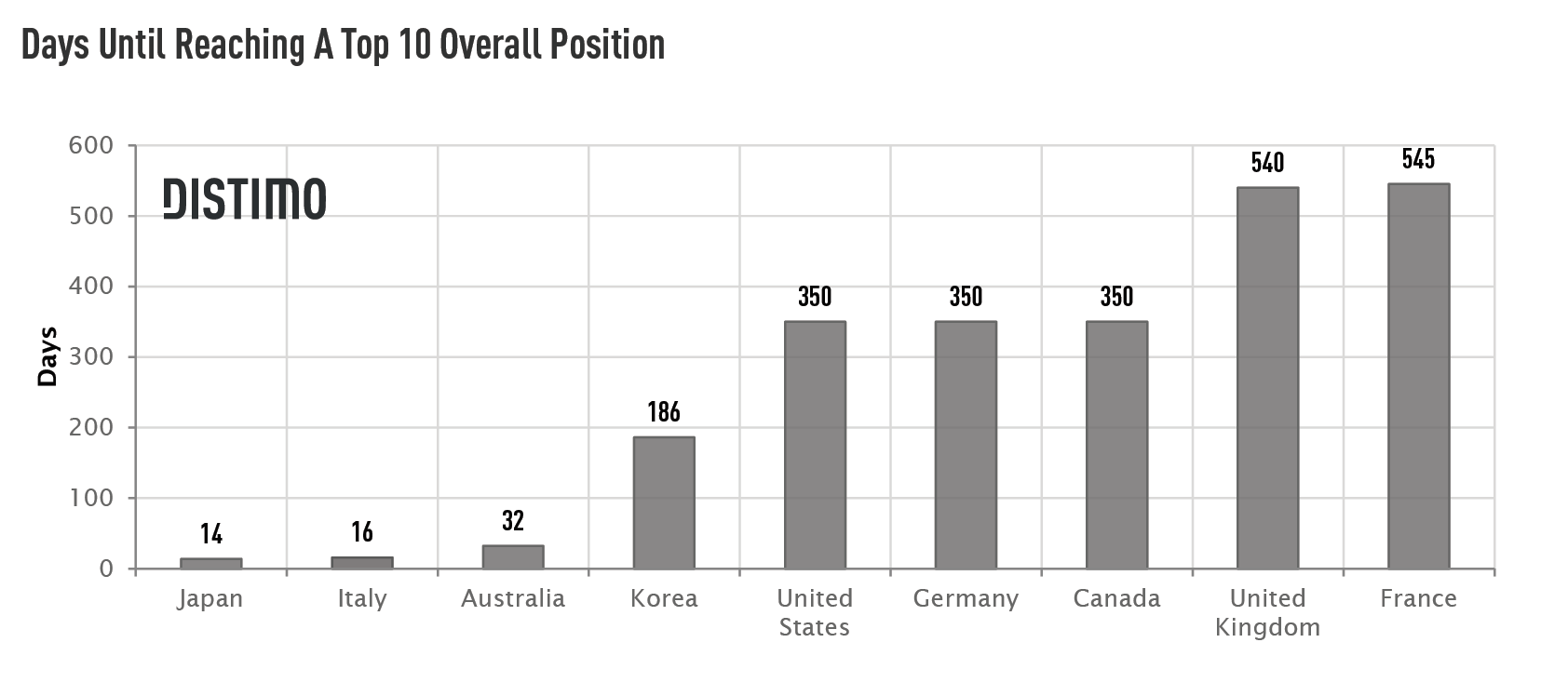The industry just can’t stop analyzing the Instagram success story, and this month, it’s app store analytics firm Distimo’s turn to take a crack at it. The company, which typically releases reports revealing notable mobile app and app marketplace trends, has turned its focus to the rise of Instagram. In its latest report, Distimo looked at how Instagram became successful, how it spread across the world, how the app’s usage compares to the number of downloads it received and more.
Instagram was launched about a year and a half ago, in October 2010. At the time, Distimo says the app was seeing under 10,000 downloads per day in the U.S. However, by April 2012, Instagram was generating well over 100,000 downloads per day in the iTunes App Store in the U.S.
Using data from real-time photo search engine Skylines in conjunction with its own, Distimo charted the app download increases from May 2011 to April of this year, and found that the cumulative downloads of Instagram were about 7 times higher in March 2012 than in May 2011. Instagram shares on Twitter had also increased more than 12 times – a metric that matters even more than downloads to some extent, because it points to active users and the average number of shares per user increasing.
After the release of the Android app and the Facebook acquisition, Instagram downloads increased to become around eight times higher than in May 2011. Shares also spiked to increase more than 20 times over May 2011.
Distimo then examined how the app fared outside the U.S. by analyzing trends in the top non-U.S. markets: Australia, Canada, China, France, Germany, Italy, Japan, Korea and the U.K. Combined with the U.S., which alone accounts for 25% of the free downloads in the App Store for iPhone, these countries generate around 72% of the free app downloads.
Interestingly enough, Instagram is not equally successful in all these markets. It took Instagram only one day to reach the number one position in the Photography category in the App Store for iPhone in the U.S., but it took it over a year and a half in Korea and nearly two months in China. The reason for the slower rise is that these markets showed a preference for apps like Instagram, but that allowed sharing to local networks like Sina, QQ Space and me2day.
Instagram never reached the Top 300 apps list one day post-launch in China and Korea, and in Germany it only made it to position #288 one day post-launch, then disappeared off the top 300 list for a week.
In English-speaking countries, however, the app followed the same general course as it did in the U.S. It rose in popularity during the first month, dipped in December 2010, then rose again gradually during 2011, eventually becoming the most popular app in the whole iTunes App Store.
During March and April 2012, Instagram has never been ranked lower than the top 35 overall app in English-speaking countries. In Australia, the U.S. and Canada, it never dropped out of the top 25 during the same time.
Meanwhile, in Italy, Instagram followed the same general pattern as in the U.S. over the past year, but in France, Germany, China and Korea, it lagged behind in popularity when compared with the U.S. Instagram has been fairly popular through the entire period in Japan, but its popularity grew less there over the year than it did elsewhere, with its average monthly rank between 35 and 85.
In Japan, Italy and Australia, Instagram became a top 10 app within a month of its launch. In Germany, the U.S. and Canada, it took around 350 days. The moment it reached that spot coincided with when Instagram announced it reached 10 million users. Twitter sharing had also increased, with over 200,000 pictures posted to the network in one day via Instagram – 14% more than a week prior.
In China, Instagram never made it into the top 10 position. The highest it has been there is #12, which it reached on April 11, 2012.
While most of Distimo’s report looks into iTunes trends, Instagram did launch on Android on April 3, 2012. When Google’s algorithm began ranking the app a few days post-launch, it was already a huge success. By April 6, it was #3 in the U.S. Google Play store. Similar to iPhone trends, the app was most popular in the U.S. and less popular in Korea and China. It never made the top 300 in Korea and ranked #48 in China. In all English-speaking countries and Italy, Instagram reached the #1 spot in days and in France, the Android version became more popular than the iPhone version, reaching spot #9. In Germany, however, Instagram only reached #51.
The industry, media, pundits, and critics alike have been analyzing Instagram’s phenomenal rise over the past months, and debating whether it was worth the $1 billion price tag Facebook paid. Distimo says Instagram certainly “made its mark on the app market,” noting also that Instagram is a new kind of social network – one built entirely from an app. That alone was reason enough for Facebook to take interest, we’d say. Adds Distimo: “Instagram definitely proved the app store economy is something everybody should keep an eye on as the next big thing might just come from an app store.”

